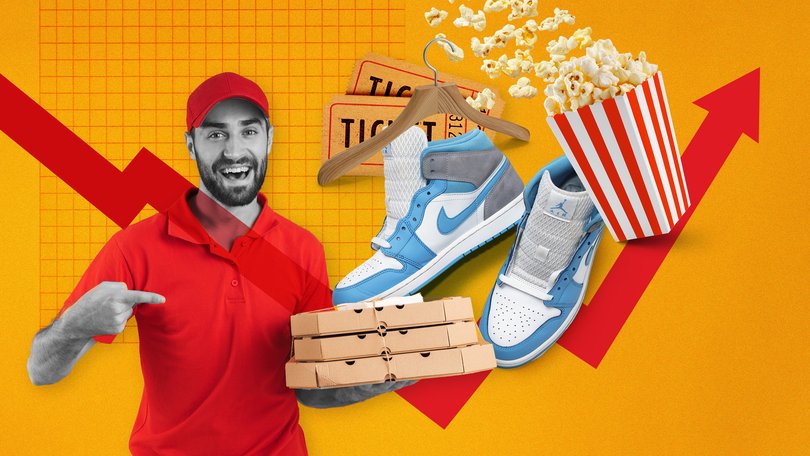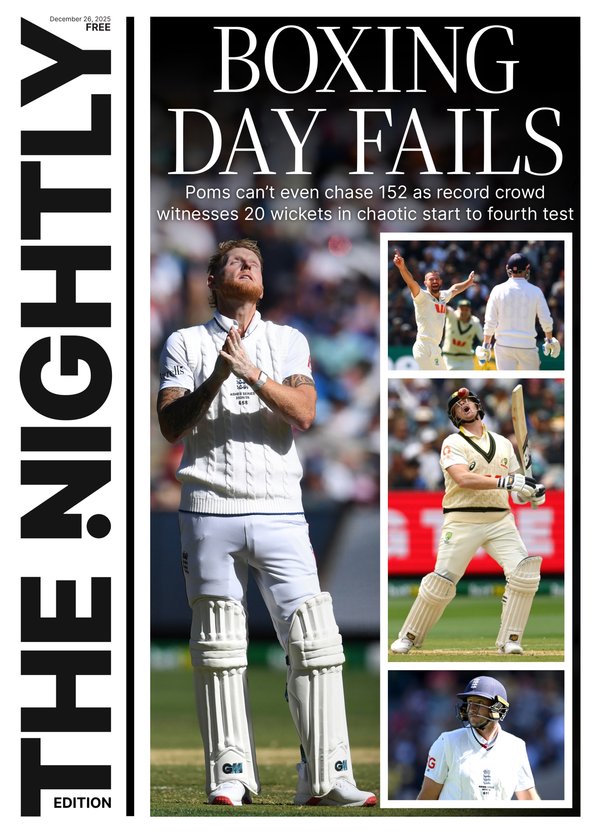Middle Australia is spending again, as UBS says the ‘fun economy’ is back

The fun economy will make a comeback later this year as Australia’s middle income earners feel the most optimistic about their financial circumstances since the ultra-low interest rate era of 2021, according to a UBS survey.
The investment bank’s strategist Richard Schellbach says easing inflation and positive wages growth have combined to make the mortgage belt of middle-income Australians willing to spend more on holidays, dining out, and entertainment after three years of belt tightening.
“The fun categories are making a comeback, led by spending intentions towards clothing, footwear, entertainment, food takeaway, and eating out,” Mr Schellbach said.
Sign up to The Nightly's newsletters.
Get the first look at the digital newspaper, curated daily stories and breaking headlines delivered to your inbox.
By continuing you agree to our Terms and Privacy Policy.“We think the economy’s gaining some momentum after a couple of years on the backfoot. Inflation is no longer as intense and consumers feel like their wages growth is giving them room to spend on discretionary categories again.”
According to the latest UBS Evidence Lab survey for September middle income earners - defined as those earning between $60,000 and $150,000 per year- now expect to increase their spending at the highest rate since 2021.
UBS also said more than half of middle-income earners surveyed were able to save more over the past year as income tax cuts and salary growth outpaced the rise in common costs such as fuel and household energy bills.
Consumers were also the most optimistic on their overall household wealth since early 2022, as three interest rate cuts from the Reserve Bank in 2025 boosted housing and stock market prices.
The RBA has taken benchmark borrowing costs down from 4.35 per cent at the start of the year to 3.6 per cent as of September.
Mr Schellbach said UBS expects the RBA to gift middle Australia’s mortgage holders a Melbourne Cup Day interest rate cut on November 4 to take borrowing rates as low as 3.35 per cent.
“People feel like they’re now getting their head above the water again and this improvement in economic data should be sustained,” he argued.
Share market forecasts
More discretionary spending by cashed-up Australians means ASX-listed retailers and travel businesses are logical winners for share market investors, according to the strategist.
Among those tipped to perform well over the next 12 months are household furniture retailer Harvey Norman and Mitre10 hardware store operator Metcash.
Elsewhere, shares in travel bellwether Qantas have surged 51 per cent over the past year as spending on holidays and business travel remains robust despite airfare price inflation. While shares in its rival Virgin Australia have also jumped 19 per cent since listing on the ASX on June 24.
Analysts’ consensus forecasts now call for the companies listed among Australia’s top 200 on the ASX to grow profits at an average of 4.6 per cent over the 12 months to June 30, 2026.
Among the top performing share market companies over August’s profit reporting season were online household furniture merchant Temple & Webster, home lighting retailer Adairs, alongside fast-fashion retailers Lovisa and Universal Stores.
However, UBS also warned investors the share market is expensive versus historical norms when compared to the average profit multiple companies trade on.
The investment bank’s research shows the average profit multiple among the top 200 companies now sits at around 20, versus a long-run historical average since 1999 of around 17.
On the ASX, UBS is calling the local tech sector to post the strongest profit growth this financial year at 16.7 per cent, with the next best sector tipped to be consumer staples that includes the big supermarkets at 15.3 per cent average profit growth.
Sectors to potentially disappoint include coal, oil, and gas producers, with UBS pencilling in average profits per share to fall 19.1 per cent as global energy prices remain weak.
Robust economy
The Australian economy surprised to the upside in the June quarter after household consumption - as a measure of total spending on goods and services - rose 0.9 per cent on the March quarter to underline the view that Australians are spending more on discretionary items like dining out and holidays.
“The Australian economy has been broadly resilient to global trade policy volatility and the apparent US slowdown,” said Australia & New Zealand Bank’ senior economist Adelaide Timbrell on Tuesday.
“In particular, the resilience of Australian households – including from a financial stability perspective and recently, a bounce-back in consumption growth – is helping to lift economic growth.”
ANZ expects Australia’s economy to grow 2.1 per cent over 2025 and 2.4 per cent in 2026.
“An additional rate cut, modest inflation and ongoing income growth should all support momentum in consumer spending in the coming quarters,” said Ms Timbrell. “The full impact of past rate cuts is also yet to be fully felt across the economy.”
The RBA is due to hand down its interest decision on September 30, with the market expecting it to hold rates as it waits for more evidence inflation is sustainably under control.
The central bank’s own modelling guides for the cash rate to fall to 3.4 per cent by the end of this year, which is closely in line with the market’s expectation for a single additional rate cut on Melbourne Cup Day.
On Wednesday, the S&P/ASX 200 Index traded up 0.7 per cent and has advanced 8.8 per cent over the past 12 months.

